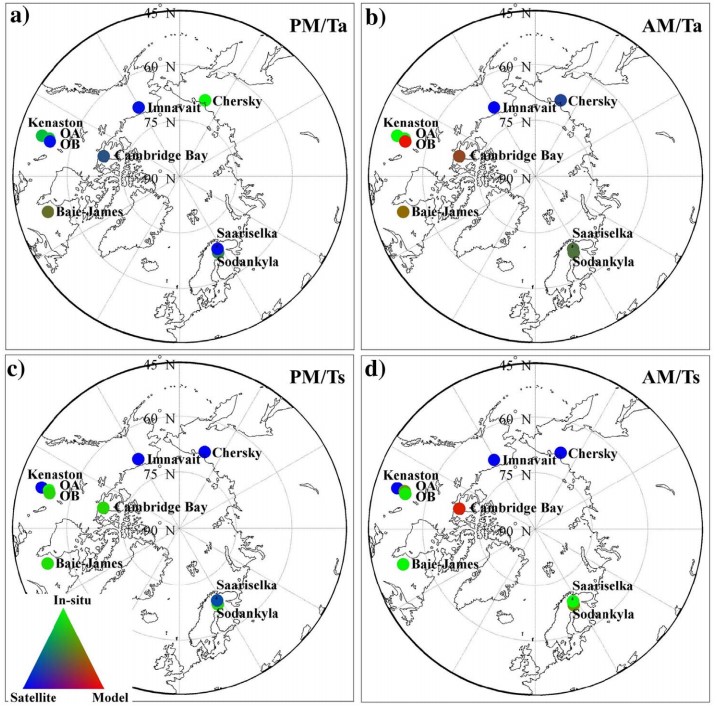Recently,DESS Ph.D. candidate Haobo Lyu as first author, Associate Professor Hui Lu as corresponding author published a paper entitled “Validation of the SMAP freeze/thaw product using categorical triple collocation”in “Remote Sensing of Environment”. Kaighin A. McColl of Harvard University and Professor Dara Entekhabi of Massachusetts Institute of Technology are co-authors of this paper.
The landscape freeze/thaw (FT) state plays an important role in local, regional and global weather and climate, but is difficult to monitor. The Soil Moisture Active Passive (SMAP) satellite mission provides hemispheric estimates of landscape FT state at a spatial resolution of approximately 362 km2 . Previous validation studies of SMAP and other satellite FT products have compared satellite retrievals with point estimates obtained from insitu measurements of air and/or soil temperature. Differences between the two are attributed to errors in the satellite retrieval. However, significant differences can occur between satellite and in-situ estimates solely due to differences in scale between the measurements; these differences can be viewed as ‘representativeness errors’ in the in-situ product, caused by using a point estimate to represent a large-scale spatial average. Most previous validation studies of landscape FT state have neglected representativeness errors entirely, resulting in conservative estimates of satellite retrieval skill. In this study, we use a variant of triple collocation called ‘categorical triple collocation’ – a technique that uses model, satellite and in-situ estimates to obtain relative performance rankings of all three products, without neglecting representativeness errors – to validate the SMAP landscape FT product. Performance rankings are obtained for nine sites at northern latitudes. We also investigate differences between using air or soil temperatures to estimate FT state, and between using morning (6 AM) or evening (6 PM) estimates. Overall, at most sites, the SMAP product or in-situ FT measurement is ranked first, and the model FT product is ranked last (although rankings vary across sites). These results suggest SMAP is adding value to model simulations, providing higher-accuracy estimates of landscape FT states compared to models and, in some cases, even in-situ estimates, when representativeness errors are properly accounted for in the validation analysis.

Fig1. Maps of the measurement system ranked first at each site using CTC with four different sets of measurements: (a) X1 PM (i.e., based on SMAP PM observations), X2 PM(Ta) (i.e., based on in-situ PM air temperature observations) and X3 PM (i.e., based on PM model output); (b) X1 AM, X2 AM(Ta) and X3 AM; (c) X1 PM, X2 PM(Ts) and X3 PM; (d) X1 AM, X2 AM(Ts) and X3 AM. Since the top-ranked measurement system may vary across the 1000 bootstrap replicates at any given site, we calculate the proportion of bootstrap replicates ranking the satellite, in-situ and model FT estimates first, and map these to a red–green–blue color space, respectively. For example, if the satellite is ranked the highest in all 1000 bootstrapped performance rankings at a site, it is colored blue; if the satellite is ranked first in 50% of the bootstrapped rankings, and the model is ranked first in the other 50%, it is colored purple. (For interpretation of the references to color in this figure legend, the reader is referred to the web version of this article.)
In this study, we validated the performance of the SMAP FT product through comparison with in-situ air and soil temperatures, and with model soil temperatures. These results suggest that SMAP FT estimates are adding value compared to model FT estimates.
According to the Thomson Reuters 2017 Annual Report, the "Remote sensing of Environment" impact factor for 2016 was 6.25.
Link:https://www.sciencedirect.com/science/article/pii/S0034425717305783